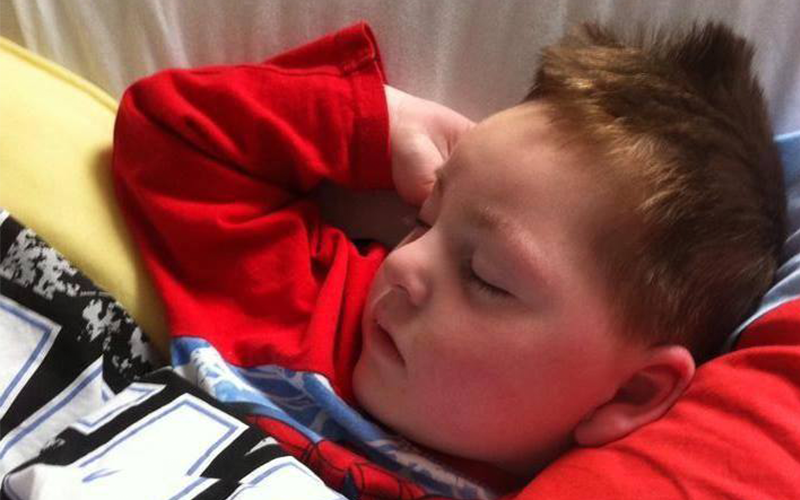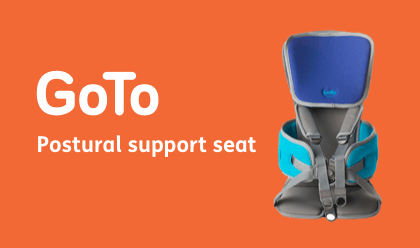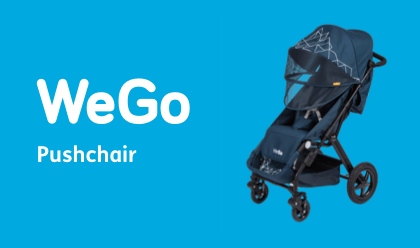Searching for Answers

There’s just 14 months between Hugh and his older brother Sean and early on the differences between the two as newborns was stark.
I kept my fears to myself at first, but after weeks of silently worrying I began to voice them out loud.
It was the little things that worried me, he wouldn’t wake for feeds, he wasn’t interested in the world around him, he didn’t make eye contact, but the GP seemed less concerned and friends and family were quick to reassure me, pointing out that babies developed at different rates and no two children were the same.
Yet there was a niggling fear at the back of my mind.
In the summer of 2010 when Hugh was around 5 months old, the doctor discovered that his head wasn’t in proportion with his length and weight.
Coupled with the fact that his development was apparently delayed – he still wasn’t holding his own head up or focusing on things – it was deemed necessary to begin investigations.
For months I’d been convinced there was something ‘wrong’ with Hugh and wished someone would take me seriously, but as soon as there was talk of x-rays and blood tests, I immediately wanted to bury my head in the sand.
Prior to having the boys I’d taught children with autism.
I remember meeting parents who were reluctant to get a diagnosis for their child.
To me, as a teacher, it was simple, a diagnosis didn’t change who they were; it just enabled people around them to understand and offer the correct support.
Yet as a parent I wanted to run from the very tests and investigations that were aimed at finding a diagnosis for my son. I even toyed briefly with the idea of refusing the tests.
I felt a diagnosis would make it all the more real somehow.
It wasn’t just my imagination; there really was something to worry about.
I didn’t want a label attached to him; a word that could be used to describe and categorise him.
Perhaps I should have been careful what I wished for? Months of testing ensued, there were x-rays and ultra-sounds, blood tests and MRIs.
Letter after letter arrived at the house with words I could neither pronounce nor understand.
I took to desperate midnight searches on google trying to decipher the doctors’ jargon. Mostly it was convoluted medical terminology describing his symptoms; hypotonia (floppy), microcephaly (small head) but there was never an explanation or an answer for why he was this way; no diagnosis, no label.
I can still remember how confused and shocked I was when the pediatrician handed me a piece of paper with wiggly lines representing chromosomes and asked if I remembered anything from biology lessons at school.
It transpired that one of the blood tests Hugh had done – a micro-array – had detected that his chromosomes were all there but that some of them were in the wrong place.
Apparently any number of us may unwittingly have jumbled up chromosomes but usually it’s only when bits are added (duplication’s – like in Downs Syndrome) or bits are missing (deletions, like in Cri-Du Chat Syndrome) that this causes problems.
Hugh’s chromosomes were all there though which didn’t really explain the difficulties he was having.
I asked her what was ‘wrong’ with him, what was causing his difficulties, what his diagnosis was.
She explained that they didn’t know and that we may never get a diagnosis.
At that point I genuinely believed we were the only people in the world who didn’t know what was causing their child’s difficulties.
I assumed that once testing began, the doctors would find a cause and we’d be given a name of something that I could Google; support groups I could join with other people who could tell me what to expect. Instead, we left feeling incredibly isolated, having no idea what the future would hold for our son.
I attempted to join local and online support groups but without a diagnosis there really wasn’t anywhere we fitted in.
After hours and hours of searching online, I finally found one other parent in the same positions as us – they too had no idea what was causing their son’s difficulties.
Knowing there was at least one other person out there really helped me feel less alone and scared.
Shortly after, when Hugh was around 1 year old, the charity Genetic Alliance resurrected the project SWAN UK, which stands for Syndromes Without A Name and I discovered that there wasn’t just two of us in the UK still searching for a diagnosis but many, many more.
In fact, shockingly, approximately half of all children with learning disabilities don’t have a definitive diagnosis to explain the cause of their difficulties.
Since then, SWAN UK has gone from strength to strength and I have become an active member of the project helping to support other families who are searching for a diagnosis.
Without a label to explain their child’s problems, some families find that they are not taken seriously or that they can not access adequate help and support.
Sometimes there is the assumption that if doctors can’t find out what is causing the child’s difficulties, that it isn’t that serious or that the child will grow out of it.
Worryingly, some families have experienced disbelief and negative attitudes from school staff and medical professionals.
Often, people find it hard to understand how, in this day and age, with all the technology that we have, that children can still remain undiagnosed.
As the project grows, more and more people are finding out about SWAN UK and more families are able to access support.
Hopefully, we can reach a stage where no-one is left feeling isolated and alone in their hunt for a diagnosis.
Hugh is now nearly 5 years old, he still remains undiagnosed.
If you would like to find out more about SWAN UK you can find their website here: http://undiagnosed.org.uk/ You can also ‘like’ them on facebook: https://www.facebook.com/SWANchildrenUK





















